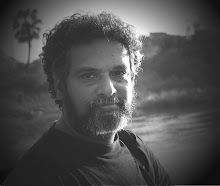Ratan Tiyyam and Ashish Vidyarthi Performs in Desh Parv…
Desh Parv - Programme on 12th October, Tuesday
Kul Varnika : 11:00 am – 1:00 pm Meghdoot III (Entry ticket)
1. Ashish Vidyarthi: 
2.Preethi Athrye:
Her presentation is based on a poem of D’Lo, a Sri Lankan political theatre artist, writer and director. Apart from being a comedian and music producer, D’Lo loves to make people laugh and think --- and that in no particular order.
Nritya Rupa: 5.30 pm Meghdoot I (Entry free)
SATTRIYA: Presented by Sattriya Kendra of Sangeet Natak Akademi
The Sattriya dance has evolved out of performances that took shape in the vast network of sattras or monasteries that were established in Assam since the sixteenth century, when the Vaishnava movement led by Shankaradeva (1449-1568) swept the land. Dramatist and composer as much as social and religious reformer, Shankaradeva was the fountainhead of this great array of performance forms, and created a corpus of songs and dance-dramas that constitute the core of the edifice. It has subsequently been built up by the ser
Naren Chandra Baruah, and Ghana Kanta Bora Borbayan’s group will be performing Sattriya dance.
CHHAU: Presented by Chhau Kendra of Sangeet Natak Akademi
The Chhau dance in its origin is the dance of indigenous peoples inhabiting a broad tract of land that today spreads over the States of Orissa, Jharkhand, and West Bengal in eastern India. In its content and technique, it bears the impress, successively, of the life of a hunting-gathering people in awe of nature, martial arts that evolved as the land was colonized by native rulers, and wider contacts in the modern period assimilating Chhau dance in the broad Indic tradition of natya.
Chhau dance is being presented by Chhau Kendra, Jamshedpur.
Natya Darshan : 6.30 pm Shri Ram Centre Auditorium (Entry ticket)
WHEN WE DEAD AWAKEN (Manipuri)
Written by Henrik Ibsen
Direction: Ratan Thiyam
When We Dead Awaken is Hendrik Ibsen’s last play. Arnold Rubek, a sculptor who has made a name for himself through his creations, cannot find peace. He is ill at ease with his wife Maja, who is drawn to Ulfhejm, an uncouth hunter. Irene, a beautiful woman from Rubek’s past, enters his life. She leads him to a mountaintop. An avalanche kills both of them as they approach the summit. In the valley below, Maja sings exultantly.

Scenes from the three acts of the original play are picked up and interpolated without altering the storyline and disrupting the continuity. However, to retain the spirit of Ibsen, no alteration is made to his dialogues.
The play opens with Shaktam Lakpa and Shakhenbi talking and arguing about their incompatibility even long after their marriage. They then part to be with the persons of their choice. Shakhenbi leaves in the company of Lamlanba while Shaktam Lakpa stays behind with Shaktam, the long-lost woman from his past.
Shaktam Lakpa and Shaktam talk fondly of the bygone days recalling the time they had spent together. She had stood before him revealing her beauty to enable him to create The Resurrection Day sculpture figured in the likeness of a young woman, awakening from the sleep of death.
Shaktam is an image, yet has much that is human in her. His lost memories and desires to be with her awakened, Shaktam Lakpa, caught in an acute existential crisis, follows Shaktam to a mountaintop. An avalanche sweeps them away.
This play is directed by Ratan Thiyam and presented by Chorus Repertory Theatre of Imphal. Ratan Thiyam is among the foremost directors on India’s theatre scene today, with several renderings of worked drama in Manipuri’s own theatrical idiom.
Director’s Note:

The performance is designed to express the internal entanglement of characters without distorting the original idea, using selected dialogues without any change from the original text.
In doing this play, I just wanted to know a different Ibsen with imagery, fantasy and ecstasy – far away from the realistic, conventional mould where the performance becomes more subtle, symbolic, suggestive and stylized.
It was not easy for me to prepare a performance text for this. But I have enjoyed immensely playing the hide-and-seek game with the genius during the making of this performance and in the process of interpreting it.
-- Ratan Thiyam
Sangeet Marg: 8.45 pm Meghdoot I (Entry free)
Percussion Ensemble ‘Laya Shakti ’
Presented by Rashid Mustafa & Group


1 Comments:
Sir...
photos,videos...iva kittumenkil kondu varane...
Post a Comment
Subscribe to Post Comments [Atom]
<< Home